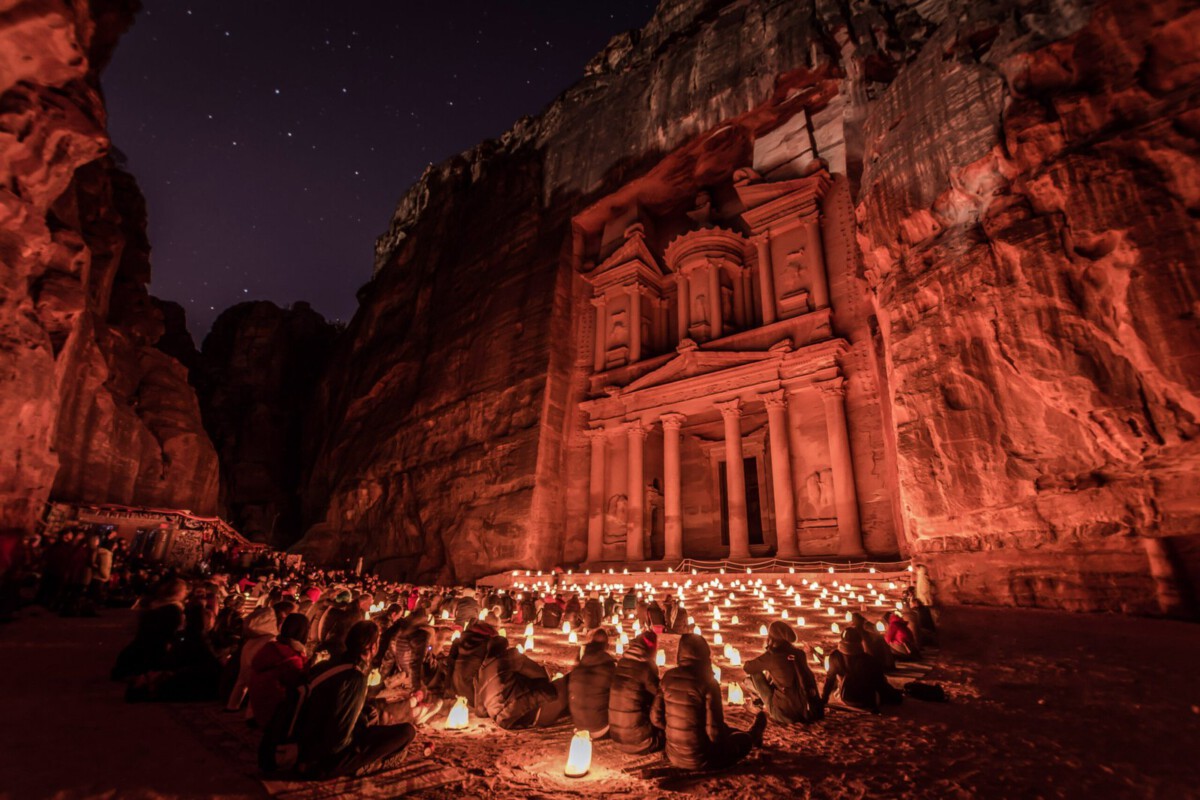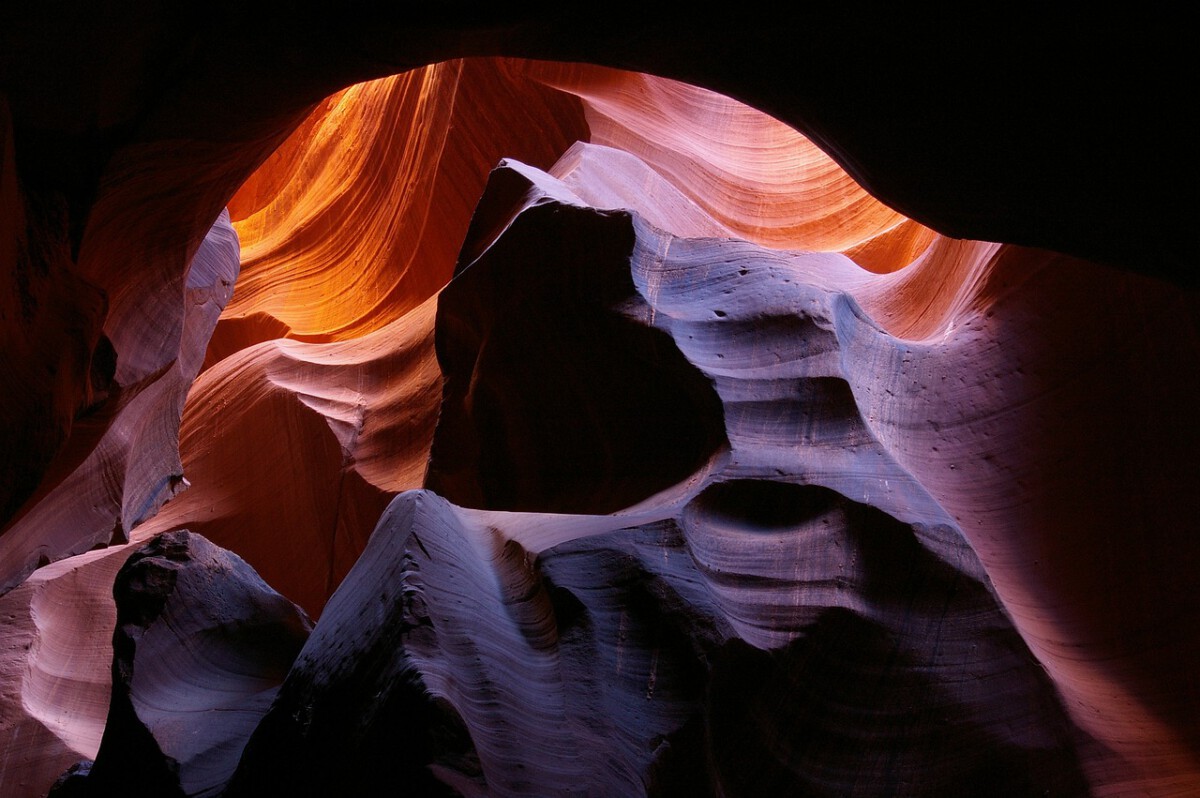The Majestic Facade of Al-Khazneh

Al-Khazneh, famously known as the Treasury, is the breathtaking heart of Petra, Jordan. Its grand facade, carved straight into the rose-hued cliffs, rises an astonishing 40 meters and stretches 25 meters across, leaving many travelers speechless at first sight. The Corinthian columns and elaborate stone carvings dazzle in the shifting sunlight, revealing new details with every passing hour. Historians have traced its origins to the 1st century AD, built as a royal tomb for Nabatean King Aretas IV, which adds to its regal allure. The name “The Treasury” comes from a legend that ancient thieves hid vast riches within, sparking imaginations for generations. Modern archaeological studies continue to uncover mysteries behind its construction and purpose, drawing experts from around the globe. Visitors today find themselves standing in awe, trying to imagine the hands and minds that created such a masterpiece from solid rock.
The Siq: A Natural Gateway

The Siq serves as Petra’s dramatic entrance, a winding gorge that stretches for about 1.2 kilometers and sets the stage for the city’s wonders. Towering sandstone walls rise up to 80 meters, their surfaces painted in radiant shades of red, pink, and gold. As visitors walk through, the shifting light and narrow passageways create an almost cinematic reveal, with each step heightening anticipation. Archaeological evidence shows that the Siq was more than just a passage—it was a critical trade route, connecting the Nabateans with distant markets. In recent years, conservation teams have worked tirelessly to protect the Siq’s unique geological features, installing subtle reinforcements and new pathways to ensure safety without disturbing its natural beauty. Walking the Siq, people often describe feeling transported through time, imagining the ancient caravans that once passed through these same echoing corridors. The Siq’s ending, with the sudden glimpse of Al-Khazneh, remains one of travel’s most unforgettable moments.
The Royal Tombs: A Glimpse into the Past

Petra’s Royal Tombs, perched high along the eastern cliffs, offer a window into the Nabateans’ architectural genius and complex beliefs about death and the afterlife. These grand burial sites—including the Urn Tomb, Silk Tomb, and Corinthian Tomb—are adorned with decorative columns, intricate motifs, and rock-hewn chambers. Each tomb reflects the status and wealth of its original occupants, blending local styles with influences from Greece and Rome. Recent archaeological excavations in 2024 made headlines when previously hidden chambers were discovered, revealing new artifacts and shedding light on ancient rituals. The discovery sent ripples of excitement through the historical community, as researchers raced to study the untouched relics and intricate wall carvings. Visitors today can explore the facades and, on guided tours, hear the latest stories unearthed by experts. These tombs stand as silent sentinels, their worn faces whispering secrets from a world long vanished.
The Monastery: A Hidden Gem

Tucked away beyond Petra’s main thoroughfares, the Monastery—known locally as Ad Deir—rises 50 meters high and commands sweeping views of the surrounding valleys. While less crowded than Al-Khazneh, reaching the Monastery requires determination, with a climb of over 800 stone steps. For those who make the trek, the reward is a quieter, almost spiritual encounter with Petra’s grandeur. The facade features a massive central niche and delicately carved details, echoing Hellenistic influences that hint at Petra’s cosmopolitan past. Recent tourism reports show a 30% surge in visitors to the Monastery over the past year, as word spreads about its hidden beauty and panoramic vistas. Travelers often linger here, sipping tea at a nearby Bedouin café and soaking up the silence. The Monastery’s sense of solitude and majesty makes it a highlight for those willing to venture off the beaten path.
The Petra Archaeological Park

Encompassing more than 264 square kilometers, the Petra Archaeological Park is a sprawling testament to ancient ingenuity and natural splendor. Designated a UNESCO World Heritage Site, the park features not only Al-Khazneh and the Monastery but also the Roman Theater, the Great Temple, and countless lesser-known ruins waiting to be discovered. In 2025, the Jordanian government unveiled new initiatives to enhance visitor facilities, including improved signage, modern rest areas, and environmentally friendly transport options. These changes aim to balance the influx of tourists with the urgent need to preserve Petra’s fragile structures. Trails wind through rocky canyons and open into hidden valleys, offering moments of peace amid the historical grandeur. The park remains a living, evolving site, where each visit can reveal something new, whether it’s a recently excavated chamber or a breathtaking view over the desert landscape.
The Nabatean Water System: Ingenious Engineering

Perhaps Petra’s most overlooked wonder is its sophisticated water management system, a feat of ancient engineering that allowed a city to flourish in the harsh Jordanian desert. The Nabateans designed an intricate network of aqueducts, cisterns, and reservoirs, some stretching over 10 kilometers, to capture and distribute precious water from seasonal rains. Recent research has highlighted the complexity of this system, with archaeologists uncovering newly mapped channels and storage tanks hidden beneath the city’s streets. In 2024, engineers began restoring parts of the ancient waterworks to demonstrate their function to modern visitors, blending education with preservation. Experts agree that this hydraulic mastery was crucial for agriculture, daily life, and Petra’s rise as a trading powerhouse. Seeing these ancient channels up close, visitors are often struck by the ingenuity and resilience of the Nabatean people.
The Cultural Significance of Petra

Petra is far more than a collection of stone facades; it is a living symbol of Jordanian pride and identity. Drawing over a million visitors each year, it remains the country’s top tourist destination and a major source of local income. The Jordanian government has made sustainable tourism a top priority, introducing programs to limit overcrowding and promote responsible travel. Throughout the year, the site comes alive with cultural events, from vibrant music festivals to colorful handicraft fairs, offering visitors a chance to experience local traditions firsthand. These events not only celebrate Petra’s past but also support the livelihoods of nearby communities. Guides often share stories passed down through generations, adding a personal touch that connects travelers to the land and its history. Petra’s enduring significance lies in its ability to inspire, educate, and unite people from around the world.
The Future of Petra: Conservation Efforts

Preserving Petra for future generations is a challenge that grows more urgent with every passing year. Erosion, weathering, and the sheer number of visitors all threaten the site’s delicate structures. In 2025, a bold new conservation plan was launched, focusing on involving local communities in preservation efforts and training guides and artisans in sustainable practices. This collaborative approach aims to foster a sense of shared responsibility and pride among those who call Petra home. The plan also includes advanced monitoring systems to detect changes in the rock formations and prevent irreversible damage. International experts have praised these efforts as a model for heritage sites worldwide, citing Petra’s proactive stance in balancing tourism with preservation. The ongoing work serves as a reminder that the wonders of Petra require constant care and vigilance.
The Night Experience: Petra by Night

Petra by Night transforms the ancient city into a realm of shadows and whispers, where candlelight and music create an atmosphere of pure enchantment. Three times a week, visitors are invited to walk the Siq under a blanket of stars, their path illuminated by thousands of flickering candles. The journey culminates at Al-Khazneh, where local musicians play haunting Bedouin melodies, and the facade glows with a gentle, golden light. In 2024, attendance at Petra by Night surged by 25%, reflecting a growing hunger for immersive, authentic experiences. Many describe the event as surreal, with the silence of the desert broken only by the soft notes of the flute and the collective gasp as the Treasury emerges from the darkness. The memory of Petra by Night lingers long after the candles have burned out.
The Legacy of Petra in Modern Culture

The spell of Petra reaches far beyond its sandstone walls, inspiring artists, filmmakers, and writers around the world. Its haunting beauty famously appeared in “Indiana Jones and the Last Crusade,” etching the site into popular imagination. The influence of Petra is visible in paintings, literature, and even contemporary architecture, as creators seek to capture its mystery and majesty. In 2025, a new documentary series is set to explore Petra’s cultural legacy, featuring interviews with historians, artists, and local residents. The site remains a powerful symbol of resilience and creativity, bridging ancient and modern worlds. For many, Petra is more than a destination—it is a source of endless fascination, a place where history feels alive and every stone tells a story.







